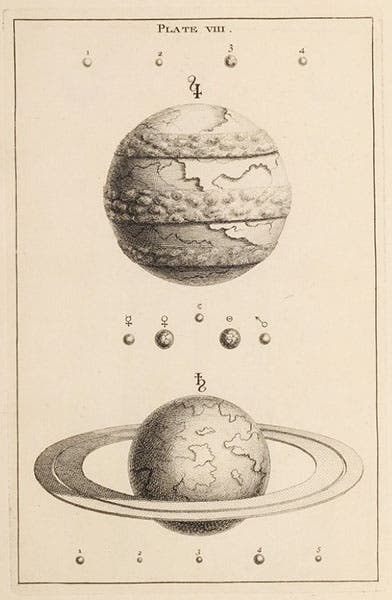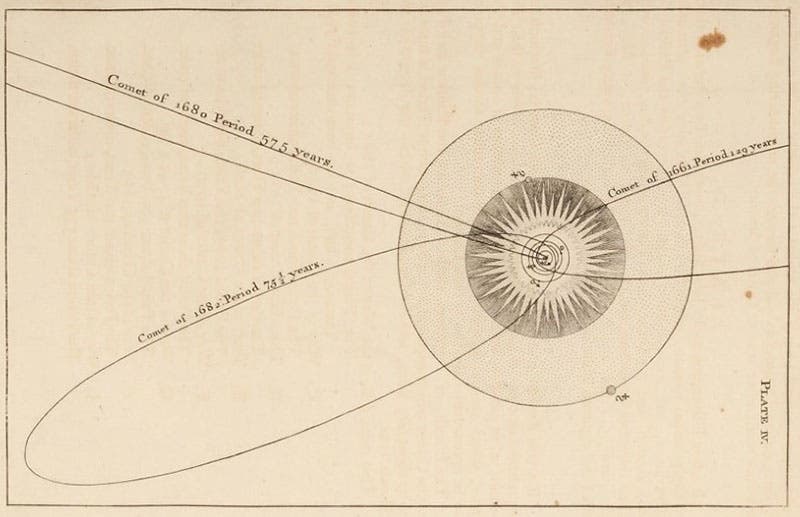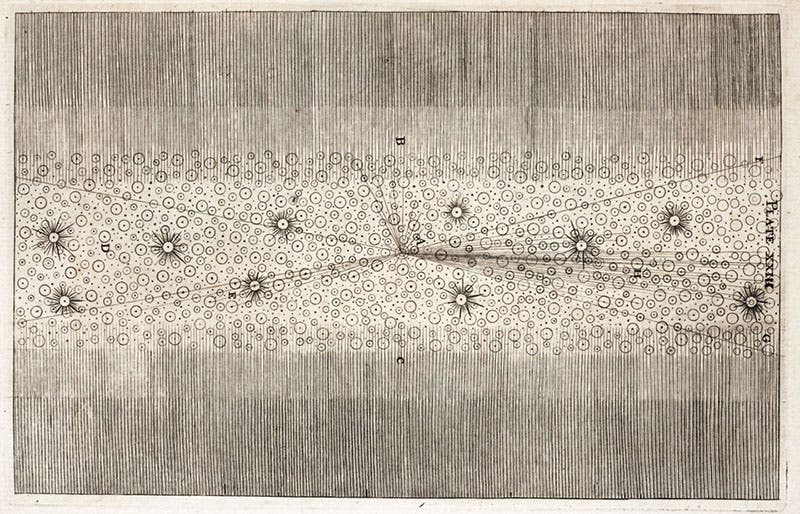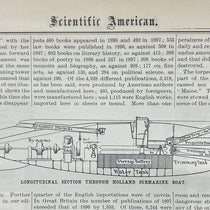Scientist of the Day - Thomas Wright
Thomas Wright, an English educator, garden designer, and would-be cosmologist, died Feb. 25, 1786, at the age of 74. Wright was an odd chap, an auto-didact whose favorite subject was astronomy, but who had to earn a learning tutoring the children of country squires around Durham, his hometown, while designing gardens in his spare time. But he managed to write, engrave, and publish, by 1750, two books on the largest of all possible subjects, the structure of the universe.
The second of these is more famous; it was published in 1750 as An Original Theory or New Hypothesis of the Universe. It is the loveliest of all our cosmology books, because it is abundantly adorned with engravings, a few of them large mezzotints that show stars and planets against the blackness of space. Wright learned well from his tutoring days – get their attention, and the rest will follow – and the plates certainly attract the attention of anyone who opens the book. Wright’s engraving of the planets and moons to scale (second image) is simple but accurate – when I taught classes in the history of astronomy, I always used this image to show what was known about the solar system on the eve of William Herschel’s discovery of Uranus in 1781. I would also show Wright’s engraving of three comets (those of 1661, 1680, and 1682; fourth image) in elliptical orbits, circling the Sun, since this was a new idea at the time, Halley’s prediction of the return of the comet of 1682 (Halley’s comet) being not yet confirmed (as it would be in 1759).
The mezzotint by Wright that we include here (fourth image, above) depicts a neighborhood of stars with planetary systems included. The stars are identified in the text; A is our Sun, and C is Sirius. We include a detail of the Sirius system (fifth image, just above), so you can appreciate the mezzotint technique, where the copper plate is roughened with a file-like rocker and then smoothed with a burnishing tool to produce lighter tones. The idea for the image came from René Descartes and his follower Bernard de Fontenelle, but their illustrations are not dramatic as Wright’s mezzotint (although admittedly Fontenelle’s folding engraving, which you can see at the link, is pretty spectacular).
The best-known image from Wright’s Original Theory is not a mezzotint, but a line engraving, which illustrates his innovative proposal that stars are not randomly distributed throughout space, but are arranged in a broad thin plane – otherwise we would not see a Milky Way in the heavens (sixth image, above). We rotated the plate 90°, because it seems more natural to us to have the plane be horizontal rather than vertical.� Wright did not conclude that the Milky Way is a disc of stars; that step would be taken by Immanuel Kant, after reading a review of Wright’s book.
I thought we might also here mention Wright's other published book, the Clavis Coelestis of 1742 (seventh image, above). This book is really just a commentary on an engraved diagram, titled “A Synopsis of the Universe, or the Visible World Epitomized”. The engraving is enormous, at least 5 feet long, and it has to be folded about 6 times one way and 3 the other to fit back into the front of the book (eighth image, below).
In the corners and around the margins are some of the cosmologies of antiquity, all geocentric. Much larger is the cosmological diagram in the center, which Wright calls the Pythagorean System, a common euphemism for the Copernican heliocentric system. We show a detail of the center below (ninth image, below). Not only does it show six planets circling a central sun, two of them (Jupiter and Saturn) with moons that Copernicus never dreamed of, but we also see five comets in elongated and closed orbits, including the three comets of 1661, 1680, and 1682, that he would plot, much more simply, in his 1750 book (third image).
The Clavis Coelestis is not only cosmologically elegant, it is very scarce. An Original Theory is a rare book, and it commands a hefty price, but there are copies to be bought and sold. The Clavis Coelestis survives in only one complete copy, and we have it in our History of Science Collection. We bought it in 1981 at the auction of the famous Honeyman Collection, and while we paid a tidy sum for the privilege of ownership, it would fetch a hundred times as much today, were there a copy for sale. A facsimile of the Clavis Coelestis was published in 1967 by Dawsons of Pall Mall in London. It is a facsimile of our copy, before it was our copy. We have the facsimile in our collection as well – it came along with the original at the auction. I must say, the original is much nicer.
How Wright could afford to publish these books – both were printed at the author’s expense – I do not know, unless tutoring and designing gardens in 18th-century Durham paid much better than I thought.
Dr. William B. Ashworth, Jr., Consultant for the History of Science, Linda Hall Library and Associate Professor emeritus, Department of History, University of Missouri-Kansas City. Comments or corrections are welcome; please direct to ashworthw@umkc.edu.














